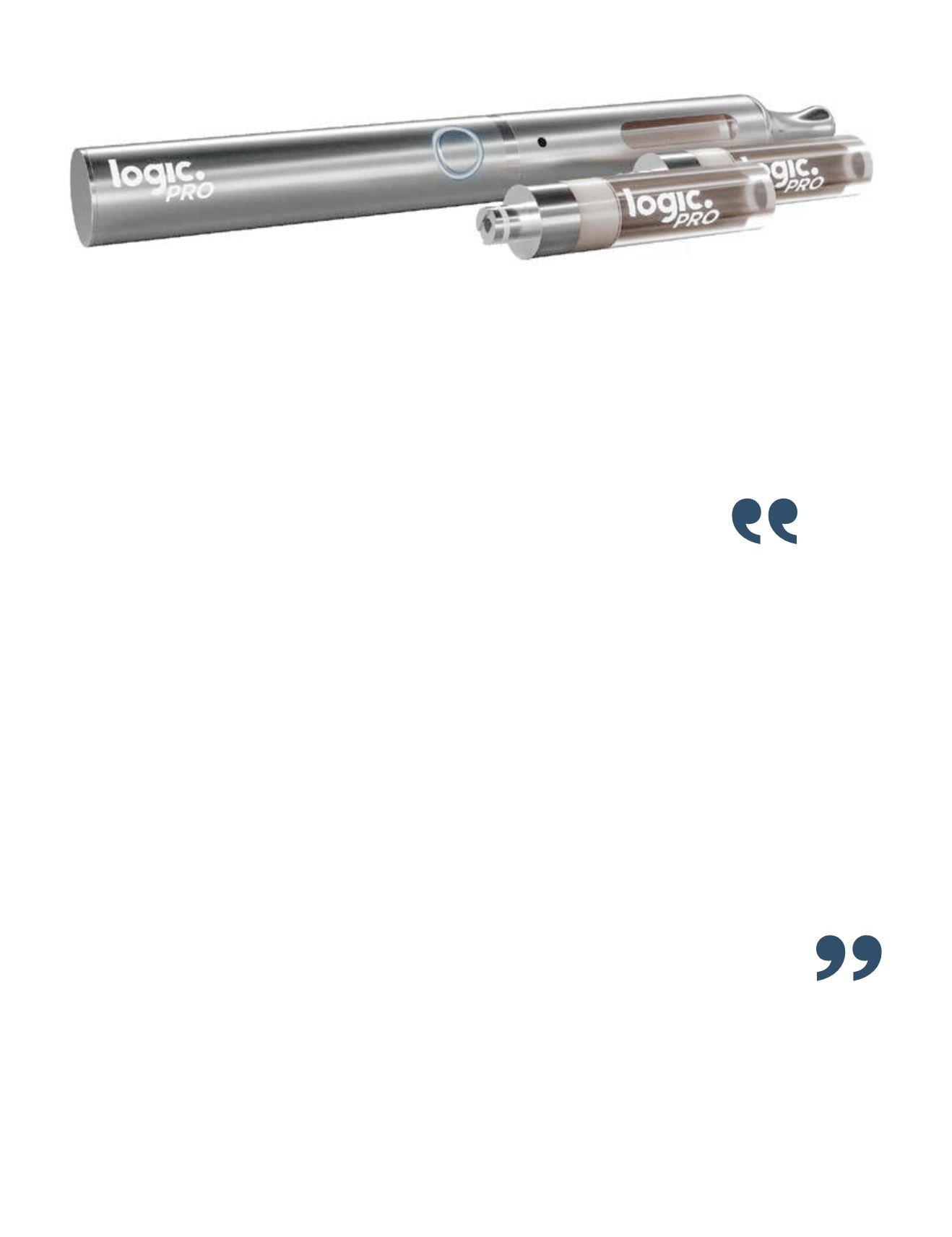

Reynolds American has made significant investments
in e-cig/vapor innovation (via the new RAI Innovations
Company) ahead of the FDA’s August 8 deeming regs
deadline, also with the c-store in mind. “Most exciting,”
according to Herzog, was the company’s presentation of
the new Vuse Vibe platform, which launched in Novem-
ber across 25,000 retailers to start, before it goes national.
“Of all the e-cig/vapor innovations we reviewed at
NACS, we thought Vuse Vibe was one of the most im-
pressive and convincing about its ability to effectively
address adult tobacco consumers’ disappointments with
current e-cig offerings in terms of taste, vapor quality
and performance,” says Herzog. “Vuse Vibe, for exam-
ple, holds much more liquid than competitors at 2 ml
versus 0.5 ml for the average e-cig, thereby delivering
more vapor per puff, and producing a much longer-last-
ing effect and more satisfying smoke experience.”
Vuse Vibe’s target audience is explicitly those smok-
ers who have tried vapor and have been disappointed—
they seek the performance of the tank, but ease of a
cigarette, according to Reynolds. This and the starting
price per kit ($19.99, battery included; cartridges are
$9.99 per two units) are clearly meant for the c-store to
regain lost vapor customers.
Logic, which is now owned by Japan Tobacco and is
the No. 4 e-cig player in the U.S. with about 12 percent
retail dollar share of the market according to Nielsen,
has recently been highlighting its “no spill” Logic Pro
lineup, which features “smart” capsule technology, and
its Logic LQD offering, which delivers e-liquid “precise-
ly” and efficiently.
Logic President Miguel Martin is confident that there
will continue to be a brick-and-mortar market for e-cigs,
but it will likely be limited to the top four to five compa-
nies with “the wherewithal to survive [the] FDA” process,
of which Logic intends to be one, he pledges. He added
that he expects the rigor of the FDA process will go a long
way toward building consumer confidence in the category
from a trust and safety standpoint. Martin believes e-cigs
have the potential to grow to 10-30 percent of the smok-
ing market with significant economies of scale.
Another player that intends to survive the FDA pro-
cess, and help c-stores with their vape image, is Mis-
tic E-Cigs. After the NACS conference in November,
it announced a strategic partnership with c-stores in
mind, aligning with e-liquid manufacturer and distrib-
utor Cosmic Fog Vapors, designed to “engage the vape
shop customer at traditional brick-and-mortar national
retailers,” a familiar theme gaining traction.
“We are seeing a resurgence of e-cigarette sales in
the c-store channel, which is further indication that
smokers and vapers are still looking for alternatives
to combustible cigarettes at traditional retailers,” says
John Wiesehan, Jr., CEO of Mistic. He believes that
partnering with Cosmic Fog, “offering their products
that have been available in the vape shop segment for
years,” will position Mistic very differently from the
Big Tobacco players in the industry and help c-stores
to expand their breadth of liquids intelligently, while
targeting the customer that wants to find vape in the
convenience space.
Cosmic Fog is also very big on social media market-
ing, something that Mistic expects will give leverage to
c-stores in the vapor space.
Mistic recognizes that c-stores are “over-inventoried
in a lot of e-cigarette brands,” and are looking for ways
to get rid of SKUs. “We’re not looking to expand their
SKUs or even the space, but to help them utilize the
space more efficiently and shuffle out what isn’t work-
ing,” Justin Wiesehan, vice president of marketing for
Mistic, tells
Tobacco Business International
. “We are looking
to get creative in the ways [in which] we work with con-
venience stores.”
As previously reported in
TBI
, Mistic released its 2.0
POD-MOD in late July, a system akin to the popular
K-cup coffee machine experience; the Mistic 2.0 is a
closed system with change-out flavor pods. The product
was created to give “the experience, flavor profiles and
vapor production that mod users are accustomed to, and
also provide ease-of-use to cig-alike users who haven’t up-
graded because they didn’t want to deal with the hassle of
bottles and tanks,” says Justin Wiesehan.
Certain cities may be especially ripe for these vapor
concepts, according to research from the R Street In-
stitute’s
Vapescore.org, an interactive database ranking
52 U.S. cities on their friendliness to vaping. It shows
that the top three cities for vaping are Virginia Beach,
Virginia; Tucson, Arizona; and Phoenix, Arizona, while
the worst three cities for vaping are Chicago, Illinois;
Boston, Massachusetts; and Minneapolis, Minnesota.
C-stores in these areas may want to take note of their
acute opportunities and challenges.
The most recent Nielsen numbers show that e-cig
dollar sales are on the rise by more than 25 percent in
the convenience channel, led by Reynolds’ VUSE and
Altria’s MarkTen XL. VUSE is reportedly maintaining
its dollar share leadership at just over 35 percent, versus
roughly 17 percent for blu, its nearest competitor. Mark-
Ten XL “continues to make inroads” from “distribution
gains most likely driven by couponing,” Herzog cited.
“In a post-deeming regs environment, we expect compe-
tition to intensify.”
TBI
We are seeing
a resurgence
of e-cigarette
sales in the
c-store chan-
nel, which is
further indica-
tion that smok-
ers and vapers
are still looking
for alternatives
to combustible
cigarettes at
traditional
retailers.
[ T O B O N L I N E . C O M ]
TOBACCO BUSINESS INTERNATIONAL
[ 43 ]
















